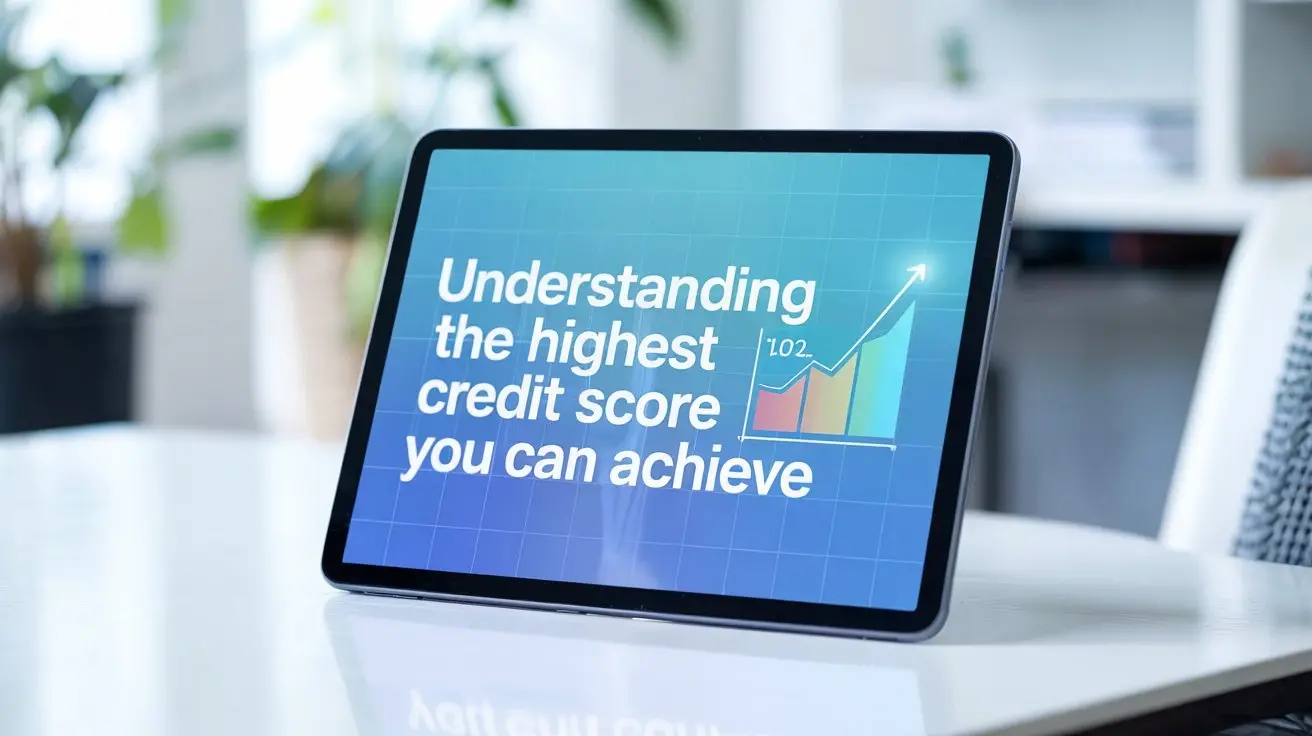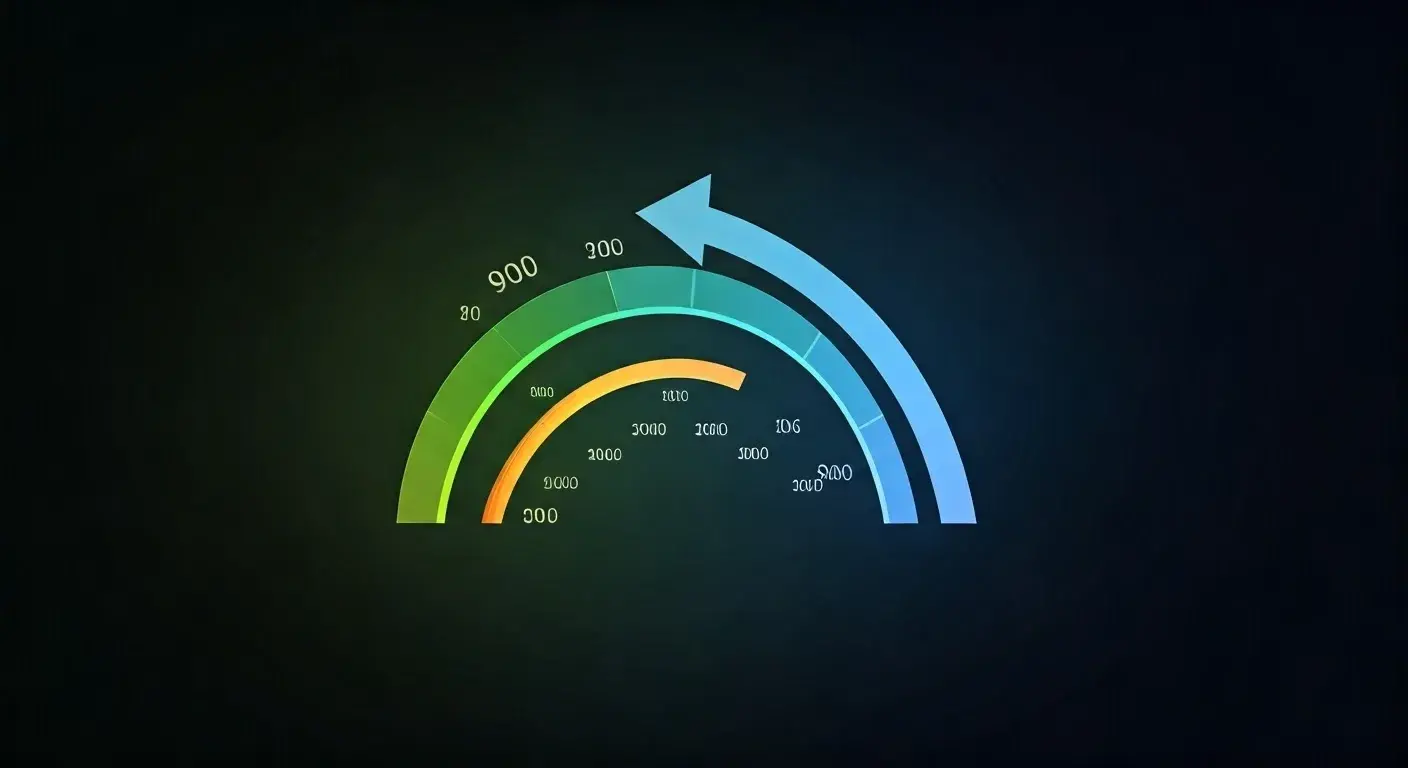-
Posted on: 30 Jan 2025

-
A credit score of 646 sits in the "fair" to "good" range, meaning it's a solid foundation but offers room for significant improvement. Understanding its implications and actionable steps to boost it can unlock better loan terms and financial opportunities in 2025.
Understanding a 646 Credit Score
A credit score is a three-digit number that lenders use to assess your creditworthiness, essentially predicting how likely you are to repay borrowed money. In the FICO scoring model, which is widely used, scores typically range from 300 to 850. Where does 646 fall within this spectrum? Generally, a 646 credit score is categorized as "fair" or "average." This means you're not in the highest tier of creditworthy individuals, but you're also not in the lowest. It's a score that signals to lenders that you have some credit history, but there are areas where you can demonstrate more responsible financial behavior to qualify for better terms and rates.
For many lenders, a 646 score might be on the cusp of what they consider "acceptable" for certain types of credit, such as personal loans or credit cards. However, for more significant financial products like mortgages or auto loans, it might be considered too low to get the best interest rates, or it might even lead to outright rejection from some lenders. The exact interpretation can vary slightly depending on the specific scoring model used (like FICO or VantageScore) and the individual lender's policies. However, the general consensus for a 646 is that it represents a credit profile with room for improvement, rather than one that is considered excellent or even very good.
What is Considered a "Good" Credit Score in 2025?
Defining what constitutes a "good" credit score is crucial for setting realistic financial goals. In 2025, the landscape of credit scoring remains largely consistent with previous years, with FICO and VantageScore being the dominant models. Generally, credit scores are broken down into several tiers:
- Exceptional: 800-850. This is the gold standard, indicating an extremely low risk to lenders. You'll likely qualify for the best interest rates and terms on all types of credit.
- Very Good: 740-799. Scores in this range are highly desirable. Lenders view you as a low-risk borrower and will offer competitive rates.
- Good: 670-739. This is a solid score that opens doors to many credit products with favorable terms. You'll likely get approved for most loans and credit cards, though not always the absolute lowest rates.
- Fair: 580-669. A score in this range indicates a higher risk to lenders. You might be approved for credit, but expect higher interest rates and potentially stricter terms. Some lenders may deny applications.
- Poor: 300-579. This score range signifies a high risk. Obtaining credit will be challenging, and if approved, it will come with very high interest rates and unfavorable terms.
Therefore, a 646 credit score typically falls into the "fair" category, bordering on "good." While it's not considered "poor," it's also not yet in the "good" or "very good" tiers that offer the most financial advantages. The goal for someone with a 646 score should be to move into the "good" or "very good" range to access better financial products and save money on interest over time.
Is 646 Good Enough for Loans and Mortgages?
The answer to whether a 646 credit score is "good enough" for loans and mortgages in 2025 is nuanced: it depends on the type of loan and the lender. For many unsecured personal loans and standard credit cards, a 646 might be sufficient for approval, but you should anticipate higher interest rates than someone with a score in the 700s. This means your monthly payments will be higher, and you'll pay more interest over the life of the loan.
When it comes to auto loans, a 646 score is often on the lower end of what many prime lenders will approve for their best rates. You might still get approved, but the interest rate could significantly increase the total cost of the vehicle. Some subprime lenders might offer loans, but with very high APRs, making it a costly option.
Mortgages are where a 646 credit score can present more significant challenges. While some FHA loans (backed by the Federal Housing Administration) can allow scores as low as 580, a 646 is still considered low for securing favorable terms. Conventional mortgages, which are not government-backed, typically require scores in the mid-600s at the absolute minimum, and often higher for better rates. A 646 might get you approved for a conventional mortgage, but the interest rate could be substantially higher, impacting your monthly payment and overall affordability. This could mean a larger down payment might be required, or you might not qualify for the loan amount you need.
For instance, consider two borrowers applying for a $200,000 mortgage. If one has a 740 credit score and the other a 646, the difference in interest rate could be 1-2 percentage points or more. Over 30 years, this difference can amount to tens of thousands of dollars in extra interest paid. Therefore, while a 646 might technically allow you to *get* a loan, it's generally not "good enough" to get the best possible terms and save money.
The Impact of a 646 Credit Score on Your Finances
Having a 646 credit score can have a tangible impact on your financial well-being in 2025. Beyond just loan approvals, it influences the cost of borrowing and even other financial services.
Higher Interest Rates: This is the most immediate and significant impact. When you borrow money, whether it's for a car, a home, a credit card, or a personal loan, lenders charge interest. Your credit score is a primary factor in determining that interest rate. A lower score signals higher risk, so lenders compensate for that risk by charging more interest. Over time, this can add thousands of dollars to the cost of your purchases.
Limited Access to Credit: While a 646 score isn't a complete barrier to credit, it does limit your options. You might be denied for premium credit cards that offer valuable rewards, or for loans with the most competitive introductory offers. You may also find it harder to get approved for higher credit limits, which can affect your ability to manage expenses or handle emergencies.
Higher Insurance Premiums: In many states, insurance companies use credit-based insurance scores to help determine premiums for auto and homeowners insurance. A lower credit score can lead to higher insurance costs, as studies have shown a correlation between credit behavior and the likelihood of filing claims. This is an indirect but significant financial consequence.
Rental Applications: Landlords often check credit scores as part of the tenant screening process. A score of 646 might be acceptable to some landlords, but others may view it as a red flag, potentially leading to rejection or a requirement for a larger security deposit or a co-signer.
Utility Deposits: Some utility companies (electricity, gas, water) may require a deposit if you have a lower credit score, as a way to mitigate their risk. This means an upfront cash outlay that you might not have to make with a higher score.
Employment Opportunities: In certain industries, particularly those involving financial responsibility or access to sensitive information, employers may conduct credit checks as part of the hiring process. A low score could potentially impact your job prospects.
In essence, a 646 credit score can make everyday financial life more expensive and more restrictive. The good news is that these impacts are not permanent and can be addressed through strategic credit management.
Strategies to Improve Your 646 Credit Score
Improving a 646 credit score requires a focused and consistent approach, targeting the key factors that influence credit scoring. The primary goal is to demonstrate to lenders that you are a reliable borrower. Here are the most effective strategies:
Understanding the Five Pillars of Credit Scoring
Before diving into strategies, it's essential to understand what makes up a credit score. The FICO model, for instance, typically breaks down scores into these categories:
- Payment History (35%): This is the most critical factor. It reflects whether you pay your bills on time.
- Amounts Owed (30%): This relates to how much credit you're using compared to your total available credit (credit utilization).
- Length of Credit History (15%): The longer you've had credit accounts open and in good standing, the better.
- Credit Mix (10%): Having a variety of credit types (e.g., credit cards, installment loans) can be beneficial.
- New Credit (10%): How often you apply for and open new credit accounts.
With a 646 score, you likely have some activity in each of these areas, but there's room for optimization. The following sections will detail how to improve each of these components.
Prioritize Payment History
Action: Pay all bills on time, every time.
This is non-negotiable. Late payments are one of the most damaging factors to a credit score. Even one late payment can significantly drop your score. If you have any past-due accounts, bring them current immediately. For ongoing bills, set up automatic payments or reminders to ensure you never miss a due date. This is the single most impactful step you can take.
Current Status Check: Review your credit reports from Equifax, Experian, and TransUnion to identify any past-due accounts or errors. You can get free copies at AnnualCreditReport.com.
Manage Credit Utilization
Action: Keep your credit utilization ratio low.
Credit utilization is the amount of credit you're using compared to your total available credit. A high utilization ratio (e.g., using 80% of your credit limit) signals to lenders that you might be overextended and are at a higher risk of default. The general recommendation is to keep your utilization below 30%, and ideally below 10% for the best impact.
Example: If you have a credit card with a $5,000 limit and you owe $4,000 on it, your utilization is 80%. If you owe $1,500, your utilization is 30%. If you owe $500, your utilization is 10%.
Strategies to Lower Utilization:
- Pay down balances: Focus on paying down existing credit card debt.
- Request credit limit increases: If you have a good payment history with a card issuer, you can request a credit limit increase. This will lower your utilization ratio if your spending remains the same. Be cautious, as this can sometimes lead to a hard inquiry on your credit report.
- Spread out spending: If you have multiple credit cards, try to spread your spending across them rather than maxing out one card.
- Pay off balances before the statement date: Some credit card companies report your balance to the credit bureaus on your statement closing date. Paying down your balance before this date can make your reported utilization appear lower.
Current 2025 Insight: Lenders are increasingly scrutinizing utilization. Maintaining a ratio below 30% is crucial, but aiming for under 10% can provide a significant boost to your score.
Address Negative Items on Your Credit Report
Action: Dispute inaccuracies and work to resolve collections.
Negative items like late payments, defaults, bankruptcies, or collections can severely damage your score. If you find any errors on your credit report, dispute them immediately with the credit bureaus. For legitimate negative items, especially collections, consider negotiating a "pay for delete" agreement with the collection agency, where they agree to remove the item from your report in exchange for payment. Even if "pay for delete" isn't possible, paying off collections can help improve your score over time, especially if the item is older.
Dispute Process: You can file disputes online, by mail, or by phone with each of the three major credit bureaus (Equifax, Experian, TransUnion).
Build Positive Credit History
Action: Open and responsibly manage new credit, if appropriate.
While opening too much new credit can hurt your score, strategically opening one or two new accounts can help build a positive credit history. If you struggle to get approved for traditional credit, consider:
- Secured Credit Cards: These require a cash deposit that typically becomes your credit limit. They function like regular credit cards and report to the credit bureaus. After responsible use, you can often graduate to an unsecured card.
- Credit-Builder Loans: These are small loans where the borrowed amount is held in a savings account and released to you after you've paid off the loan. They are designed specifically to help you build credit history.
Important Note: Only open new credit if you can manage it responsibly. The key is to use it for small, manageable purchases and pay them off in full and on time.
Consider Authorized User Status
Action: Ask a trusted individual with excellent credit to add you as an authorized user.
If you have a close family member or friend with a long history of on-time payments and low credit utilization on a particular credit card, they can add you as an authorized user. This means you'll have a card with their account number, but you won't be legally responsible for the debt. The positive payment history and low utilization of that account can then be reflected on your credit report, potentially boosting your score. However, ensure the primary cardholder maintains good habits, as their negative actions could also affect you.
Be Patient and Consistent
Credit score improvement is a marathon, not a sprint. It takes time for positive actions to reflect on your credit report and for your score to increase. Focus on maintaining good habits consistently over months and years.
Mastering Credit Utilization
Credit utilization is a powerful lever for improving your credit score, accounting for approximately 30% of your FICO score. For someone with a 646 credit score, optimizing this factor can yield significant gains. The goal is to demonstrate that you can manage credit responsibly without relying heavily on it.
Understanding the Ratio
Your credit utilization ratio (CUR) is calculated by dividing the total balance you owe across all your revolving credit accounts by the total credit limit across those same accounts. For example, if you have two credit cards:
- Card A: $2,000 balance, $5,000 limit
- Card B: $1,000 balance, $5,000 limit
Your total balance is $3,000 ($2,000 + $1,000). Your total credit limit is $10,000 ($5,000 + $5,000). Your overall credit utilization ratio is $3,000 / $10,000 = 30%.
The Ideal Utilization Targets
While a CUR below 30% is generally considered good, experts and credit bureaus often recommend aiming for much lower figures to see the most substantial score improvements:
- Below 30%: This is the baseline for good utilization. It suggests you're managing your credit well.
- Below 10%: This is considered excellent utilization. Scores in the "good" and "excellent" ranges often have credit utilization ratios below 10%.
For a 646 score, moving from, say, 50% utilization down to 10% can potentially add a significant number of points to your score.
Practical Strategies for Lowering Utilization
1. Pay Down Balances Aggressively: The most direct way to lower your CUR is to reduce the amount you owe. Prioritize paying down balances on credit cards, especially those with high utilization. Consider using the debt snowball or debt avalanche method to tackle your debts strategically.
2. Request Credit Limit Increases: If you have a solid payment history with a credit card issuer, you can contact them and request a higher credit limit. If approved, and you don't increase your spending, your CUR will automatically decrease. For example, if your balance remains $2,000 but your limit increases to $10,000, your utilization drops from 40% to 20%. Be aware that some issuers may perform a hard inquiry for this, which can slightly impact your score temporarily.
3. Strategically Spread Balances: If you have multiple credit cards, and one is nearing its limit while others have low balances, consider transferring some of the balance to a card with a higher limit or more available credit. This can help keep individual card utilization low, which is also a factor some scoring models consider.
4. Pay Multiple Times a Month: Credit card companies often report your balance to the credit bureaus on your statement closing date. If you make a payment *before* this date, the reported balance will be lower. You can make multiple payments throughout the month to keep your reported balance low, even if you're using the card regularly. For example, if you make a purchase on your card, pay it off a few days later. Repeat this process.
5. Avoid Maxing Out Cards: It might seem obvious, but consistently maxing out credit cards is a major red flag. It indicates you're heavily reliant on credit and potentially struggling to manage your finances. Even if you pay it off quickly, the high reported balance can hurt your score.
Current 2025 Data: Studies continue to show that individuals with credit utilization below 10% consistently achieve higher credit scores. This is a critical area to focus on for anyone looking to move their score from the "fair" to the "good" or "very good" range.
The Power of Consistent Payment History
Payment history is the most influential factor in your credit score, accounting for a substantial 35% of your FICO score. For someone with a 646 credit score, ensuring a perfect payment history going forward is paramount. Any blemishes here can undo progress made in other areas.
Understanding Payment History's Weight
This component reflects whether you've paid your bills on time. It includes:
- On-time payments: The most positive indicator.
- Late payments: Even a single 30-day late payment can significantly lower your score. The impact worsens with the severity of the lateness (60 days, 90 days, etc.).
- Collections: Accounts that have been sent to a collection agency.
- Charge-offs: When a lender writes off a debt as uncollectible.
- Bankruptcies: The most severe negative mark.
The good news is that positive payment history builds over time. A single late payment will have less impact as more on-time payments follow it.
Strategies for Ensuring On-Time Payments
1. Automate Payments: Set up automatic payments for all your bills, especially credit cards and loans. Ensure you have sufficient funds in your bank account to cover these payments to avoid overdraft fees and missed payments. You can often set the payment to be the minimum due, which ensures you don't miss a payment, and then make additional payments manually to pay down balances faster.
2. Use Calendar Reminders and Alerts: If you prefer not to automate payments, set up calendar alerts on your phone or computer a few days before each bill is due. This acts as a crucial reminder.
3. Consolidate Due Dates: If possible, try to align your due dates for various bills. This can simplify your bill-paying process and reduce the chances of missing one.
4. Contact Lenders If You Anticipate Difficulty: If you foresee a situation where you might struggle to make a payment (e.g., due to job loss or unexpected expenses), contact your lenders *before* the due date. Many are willing to work with you to set up a temporary payment plan or deferment, which can prevent a late payment from appearing on your report.
5. Review Your Credit Report Regularly: Check your credit reports from Equifax, Experian, and TransUnion at least annually (or more often if you're actively working on your score). Look for any late payments that you don't recognize or that are inaccurate. If you find an error, dispute it immediately with the credit bureau. This is crucial for maintaining the integrity of your payment history.
Current 2025 Outlook: Lenders are increasingly using sophisticated algorithms that heavily weigh recent payment history. Demonstrating a consistent pattern of on-time payments over the last 12-24 months is key to moving your score upwards. Even if you have past late payments, your score will improve significantly as these fall off your report (typically after 7 years) and are replaced by positive payment history.
The Importance of Credit Age
The length of your credit history, also known as credit age, accounts for about 15% of your FICO score. This factor assesses how long you've been managing credit and the average age of your accounts. A longer credit history generally indicates more experience managing credit, which lenders see as a positive sign of stability and reliability.
Understanding Credit Age Factors
Credit age is influenced by:
- Age of Oldest Account: The longer your oldest credit account has been open and in good standing, the better.
- Age of Newest Account: Opening too many new accounts in a short period can lower your average credit age.
- Average Age of All Accounts: This is the weighted average age of all your open credit accounts.
Strategies for Maximizing Credit Age
1. Keep Old Accounts Open: Even if you don't use an old credit card much, keeping it open (especially if it has no annual fee) can help maintain your average credit age and preserve your total available credit. Closing old accounts can reduce your average age and increase your credit utilization ratio if you have balances on other cards.
2. Use Old Accounts Periodically: To prevent issuers from closing inactive accounts, make a small purchase on them every few months and pay it off immediately. This signals to the issuer that the account is still active.
3. Avoid Opening Too Many New Accounts Too Quickly: While new credit can help build your credit history, opening multiple new accounts in a short span will significantly decrease your average credit age. Space out applications for new credit, and only apply when you genuinely need it.
4. Be Patient: Credit age is a factor that naturally improves over time. The best strategy is to be patient and maintain good credit habits on your existing accounts.
Current 2025 Considerations: While you can't magically age your credit history, focusing on keeping older accounts open and active is crucial. For someone with a 646 score, who may not have a very long credit history yet, this becomes even more important. It's a long-term strategy that pays dividends as time passes.
Understanding Credit Mix and New Credit
The final two components of credit scoring, credit mix and new credit, each account for about 10% of your FICO score. While less impactful than payment history or credit utilization, they still play a role in building a strong credit profile.
Credit Mix Explained
Credit mix refers to the variety of credit accounts you have. Lenders like to see that you can manage different types of credit responsibly. The two main categories are:
- Revolving Credit: This includes credit cards, home equity lines of credit (HELOCs), and personal lines of credit. These accounts have a credit limit, and you can borrow and repay funds repeatedly.
- Installment Credit: This includes mortgages, auto loans, student loans, and personal loans. These are typically for a fixed amount that you repay in equal installments over a set period.
Having a mix of both revolving and installment credit can be beneficial. However, it's not advisable to open new accounts solely for the sake of credit mix if you don't need them, as this can negatively impact the "new credit" factor.
New Credit Factors
This factor looks at how often you apply for and open new credit accounts. It's broken down into:
- Number of Recent Inquiries: Each time you apply for credit, a hard inquiry is typically placed on your credit report. Too many hard inquiries in a short period can suggest you're in financial distress or taking on too much debt, which can lower your score.
- Number of Recently Opened Accounts: Opening several new accounts recently can also lower your score.
- Time Since Last Account Opened: A longer gap between opening accounts is generally better.
Strategies for Credit Mix and New Credit
For Credit Mix:
- Focus on existing accounts: If you already have a mix of credit types, continue to manage them responsibly.
- Don't open unnecessary accounts: Avoid opening new credit cards or loans just to improve your credit mix if you don't have a genuine need for them. The potential score drop from new credit inquiries might outweigh any benefit.
For New Credit:
- Limit Applications: Apply for new credit only when necessary. For example, if you need a car, shop around for loans within a short period (e.g., 14-45 days, depending on the scoring model) so that multiple inquiries for the same type of loan are treated as a single inquiry.
- Be Mindful of Hard Inquiries: Understand that each hard inquiry can ding your score by a few points. While their impact lessens over time, it's best to minimize them.
- Avoid "Credit Shopping" Frenzy: Don't apply for multiple credit cards or loans simultaneously.
Current 2025 Relevance: While these factors are less influential than payment history and utilization, they contribute to the overall picture. A responsible approach to managing existing credit and being judicious with new applications is key. For a 646 score, focusing on the higher-weighted factors will yield more immediate results, but maintaining good practices in these areas supports long-term credit health.
Monitoring Your Progress and Staying on Track
Improving your credit score is an ongoing process, not a one-time fix. Consistent monitoring is essential to track your progress, identify any new issues, and ensure your efforts are paying off. In 2025, tools and resources are readily available to help you stay informed.
How Often to Check Your Score
Credit Reports: You are entitled to a free credit report from each of the three major credit bureaus (Equifax, Experian, and TransUnion) every 12 months. It's highly recommended to check these reports at least annually, and more frequently if you're actively disputing errors or applying for significant credit.
Credit Scores: Many credit card companies, banks, and financial apps offer free access to your credit score. While these might not always be the exact FICO score used by every lender, they provide a good indication of your credit standing and how it's changing. Aim to check your score monthly to see the impact of your credit management strategies.
What to Look For During Monitoring
When reviewing your credit reports and scores, pay attention to:
- Payment History: Ensure all payments are being reported as on-time.
- Credit Utilization: Track your CUR for each card and your overall utilization.
- New Inquiries: Be aware of any new hard inquiries that you didn't authorize.
- Account Balances: Verify that balances are reported accurately.
- Personal Information: Check that your name, address, and Social Security number are correct.
- Any Negative Marks: Watch out for any new late payments, collections, or other negative information that shouldn't be there.
Tools and Resources in 2025
Several excellent resources can help you monitor your credit:
- AnnualCreditReport.com: The official source for your free credit reports.
- Credit Monitoring Services: Many services (some free, some paid) offer regular credit score updates and alerts for changes to your credit report. Examples include Credit Karma, Experian Boost, and services offered by your bank or credit card issuer.
- Budgeting Apps: Some personal finance and budgeting apps integrate credit score tracking.
Staying Motivated
Watching your credit score increase can be incredibly motivating. Celebrate small victories, like seeing your CUR drop or a past-due mark disappear. Remember that consistency is key. Even small, positive actions taken regularly will compound over time, leading to significant improvements in your creditworthiness.
By actively monitoring your credit, you empower yourself with the knowledge needed to make informed financial decisions and stay on the right path toward achieving your financial goals.
Conclusion: Your Path to a Stronger Credit Score
A credit score of 646, while not ideal, is a manageable starting point for significant improvement. It signifies a fair credit standing, meaning you have a foundation but can unlock better financial opportunities by focusing on key credit-building strategies. In 2025, understanding that this score may lead to higher interest rates on loans, limited credit options, and potentially higher insurance premiums is crucial.
The path to a better score hinges on diligently addressing the core components of credit scoring: maintaining impeccable payment history, drastically reducing credit utilization, ensuring accuracy on your credit reports, and patiently building a positive credit history. By prioritizing on-time payments and keeping your credit utilization below 30% (and ideally below 10%), you directly influence the most impactful factors. Furthermore, keeping older accounts open and being judicious with new credit applications supports the long-term health of your credit profile.
Don't underestimate the power of consistent, positive financial behavior. Regularly monitoring your credit reports and scores will provide the feedback you need to stay on track and celebrate your progress. With a strategic approach and unwavering commitment, transforming your 646 credit score into a "good" or "very good" one is entirely achievable, paving the way for more favorable loan terms, reduced borrowing costs, and greater financial freedom.











